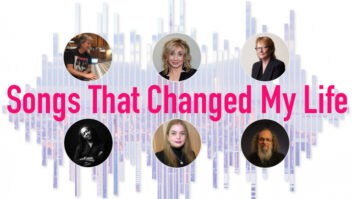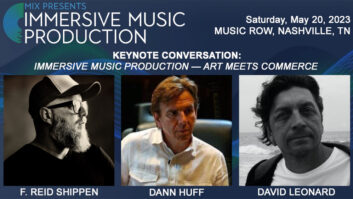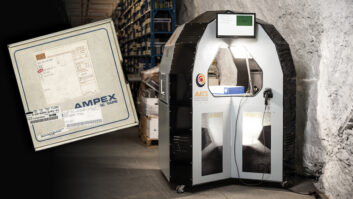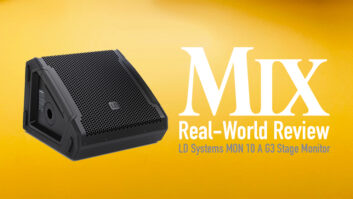
I’ve talked about quality more than a few times in this column. I’m a firm believer that quality is cheaper when buying gear, and that great gear can help make great-sounding records. I’m not fooling myself, I know that the best tracked and mixed recording of badly performed or written music will always be an awful experience. But that’s not the point here—it’s the quality mindset. I recently had a conversation with engineer Tommy Vicari, who believes just that. His philosophy is to make records that will stand the test of time, so they’ll sound as good in the future as they do now, no matter the source.
Tommy’s sentiments were echoed in a recent Mix Webcast I moderated with Michael Bishop, Ed Cherney and Gregg Field, three industry pros at the top of the game. Michael Bishop has been experimenting with new converters operating at ultra-high resolution using 11.2 MHz 1-bit Direct Stream Digital technology. All three participants talked about their favorite mics, preamps and converters, and dropped a few tips they’ve learned over the years. But no matter what this generation of pros is doing, unless the consumer drives the push toward quality, the next generation of engineers will have no incentive to keep the ball rolling. But I think the conversation is changing. I’m a blog watcher and trade show junkie, and you can always tell there’s something stirring by the buzz at the poles.
At one end, Sony is pushing a new range of High Resolution Audio (HRA) audio gear, and bloggers responded with a range of reactions. Gizmodo’s “What Is High Resolution Audio?” took a broad approach, quoting Neil Young in support of higher resolution, and Monty Montgomery saying just the opposite. Then there’s Sessionville’s “This Just In: High Resolution Coming, Your Money Going,” saying, “Good music is good no matter what gear you play it on. And less than 1 percent of the population has good enough ears to discern higher sampling and bit rates from the generic stuff in a blind taste test.” I put a lot more faith in the listening public and believe I could easily prove that view false.
What got me thinking about the quality conversation was a silly ad on TV. It was for a set of headphones you could pull off your head, hang around your neck and they’d double as speakers. As ridiculous as it looked, it was the language I was more interested in. It wasn’t the typical lifestyle ad where college-age Joes/Josettes, celebrities and/or sports figures are wearing $400 headphones to a hip soundtrack—in this ad, the users were talking about quality.
As in all fads and product cycles, the saturation point for “cool” has waned. So the next logical step is to make quality cool, and with that comes the next step. If you just spent $400 for headphones, why not slap some more money down on your personal listening system by buying a better DAC and headphone amp? This works for consumers and pros as well. Who wouldn’t want a better portable solution for listening, producing, recording and whatnot? It’s already heading there at the front end. In this issue, read Chris Grainger’s excellent review of the Antelope Orion 32 AD/DA with USB, MADI I/O and more. I see the iPad as an up-and-comer in audio production, and if pros are going to edit, evaluate and even record to this format, the only thing lacking is the poor I/O and headphone outs. There are some great higher-end solutions that work in this regard.
At Summer NAMM, I saw the Sony PHA-1 portable DAC and headphone amp ($599). Great for consumers, but lacking some critical features that pros might use for portable production. With the help of intrepid Mix reviewer/researcher Bobby Frasier, we went on a hunt for portable DAC/headphone amps that an audio producer/engineer would embrace. Wish list? It would have to work with iOS (30-pin or Thunderbolt to USB), run on batteries, have a headphone amp, line outs and a digital pass thru. Here’s what we found. Note: The AlgoRhythm SOLO -dB and ALO Audio RxMK3-B must be used together to satisfy our operational wish list, making it the most expensive option on our list.
No matter where you fall in the discussion, in the consumer and pro world, portable quality is the new trend. You can see it in live production, computers, small footprint I/O like the Orion 32 and more. The key for me is to keep talking about quality. It’s a healthy conversation to have.






